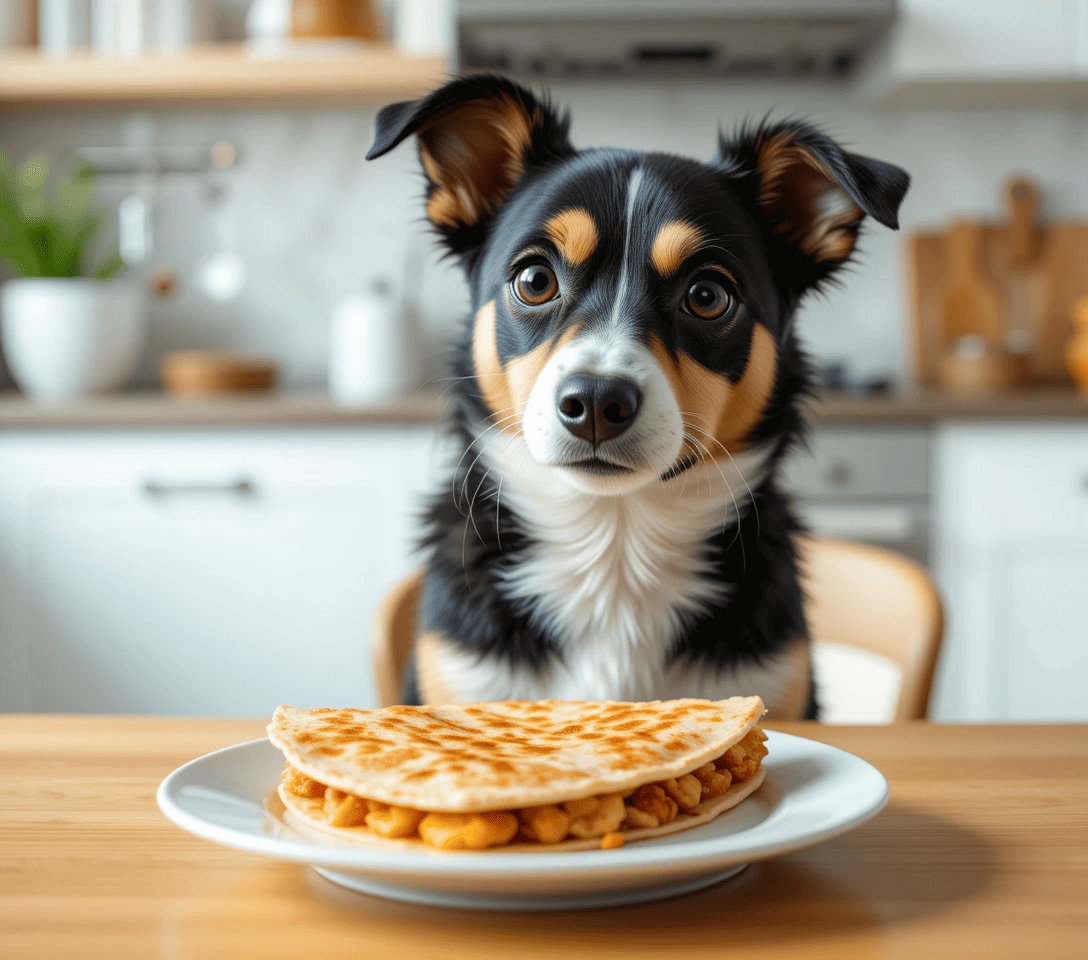Common Toxic Ingredients to Watch For
Quesadillas are a beloved Mexican-inspired snack made by folding or stacking flour or corn tortillas filled with melted cheese and often enhanced with meats, vegetables, spices, and oils. Their crispy exterior and gooey interior make them a staple at casual gatherings and family dinners. However, despite their human appeal, quesadillas present multiple health risks for dogs and should never be shared as a regular treat
First and foremost, quesadillas are high in fat and calories. The combination of cheese and fatty meats like grilled chicken, steak, or chorizo can easily overwhelm a dog’s digestive system. Dogs require far less dietary fat than humans, and consuming rich foods can precipitate pancreatitis—an inflammation of the pancreas that leads to vomiting, diarrhea, abdominal pain, and, in severe cases, organ failure
In addition to fat, tortillas and processed cheeses contain elevated levels of sodium. While dogs need some salt for electrolyte balance, commercial dog food already supplies the appropriate amount. Excess sodium intake can lead to salt poisoning, which manifests as excessive thirst, urination, tremors, seizures, and in extreme cases, coma. Chronic overconsumption may also contribute to hypertension and cardiovascular disease
Most adult dogs are lactose intolerant because they lack sufficient lactase—the enzyme required to break down lactose in dairy products. When a lactose-intolerant dog consumes cheese, it often experiences gastrointestinal distress, including gas, bloating, vomiting, and diarrhea. Even lactose-free or lower-lactose cheeses remain high in fat and calories, offering no real benefit
Many quesadilla recipes also include ingredients that are toxic to dogs. Onions, garlic, and related alliums contain compounds that damage canine red blood cells, leading to hemolytic anemia. These ingredients may be hidden in seasoned meats, sauces, or powdered spice blends. The toxic effects can be delayed, so a dog might seem fine initially but develop serious symptoms days later
Spices and seasonings commonly used in quesadillas—such as chili powder, cumin, and various hot sauces—can further irritate a dog’s gastrointestinal tract. Capsaicin, the active component in chili peppers, may cause severe burning sensations and inflammation in a dog’s mouth, throat, and stomach. Oils and butter used to cook quesadillas add even more fat and may include additives or preservatives harmful to canine health
Even if a quesadilla appears simple—just cheese between two plain tortillas—it still poses risks due to its high fat, sodium, and calorie content. Plain corn tortillas without salt or oil offer minimal nutritional value and should be given sparingly, if at all. Wheat flour tortillas contain refined carbohydrates that can spike blood sugar and contribute to obesity
What to Do If Your Dog Eats a Quesadilla
Monitor for Symptoms
Keep a close eye on your dog for signs of vomiting, diarrhea, lethargy, excessive thirst, rapid breathing, or abdominal discomfort
Determine Ingredients
Check whether the quesadilla contained onions, garlic, spicy sauces, or fatty meats. Any of these ingredients warrant prompt veterinary evaluation
Hydrate: Encourage your dog to drink fresh water to help dilute excess salt and fats in their system
Contact Your Veterinarian
If you observe any worrying symptoms or your dog consumed a large quantity, seek veterinary advice immediately. Early intervention can prevent complications like dehydration and severe pancreatitis
Healthy Alternatives to Share with Your Dog
Instead of risking your dog’s well-being with quesadillas, consider these vet-approved human foods in moderation
Plain Cooked Meats: Unseasoned chicken, turkey, lean beef, or fish provide protein without harmful additives
Vegetables: Steamed carrots, green beans, peas, and sweet potatoes offer fiber and vitamins
Fruits: Seedless apple slices, blueberries, watermelon, and bananas are safe treats packed with antioxidants
Plain Rice or Oatmeal: These bland carbohydrates can soothe an upset stomach when fed in small portions
Always introduce new foods gradually and in small amounts. If you’re ever in doubt, consult your veterinarian before adding any human food to your dog’s diet




Add comment